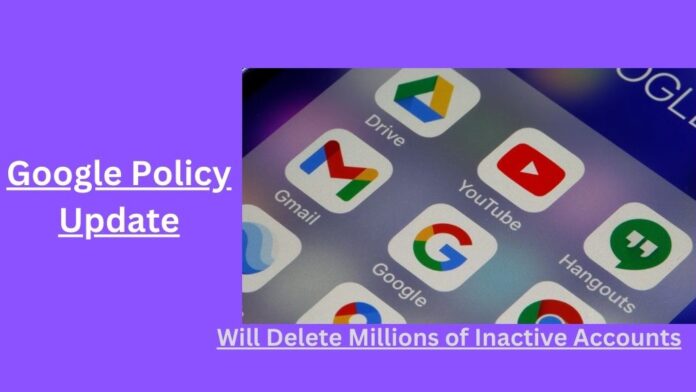You might wish to regain those login information if your Gmail account hasn’t been used in a while.
Google says it will delete inactive personal accounts that haven’t been accessed for at least two years.
What this implies for your emails, images, and documents, as well as if your Google account may be impacted, is explained below.
What’s happening to my unused account?
Google has the right to erase an account and all of its contents if it hasn’t been used or signed into for at least two years.
This is true for all Google Workspace content, including YouTube and Google Photos.
That contains:
- Gmail
- Docs
- Drive
- Meet
- Calendar
But only personal Google Accounts are covered by this regulation.
In a blog post earlier this week, Google’s vice president of product management Ruth Kricheli stated that the change “won’t affect accounts for organizations like schools or businesses.”
When is this happening?
Google would start erasing accounts as early as December. Google just announced in a blog post that the new rule would go into effect in December 2023.
This will take place “slowly and carefully, with ample notice,” according to Ms. Kricheli.
Starting with accounts that were established and never used again, we will implement our plan in stages.
Will I know if my account is being deleted?
Yes. Google claims it would notify users several times in the months before canceling their accounts.
These emails will be delivered “to both the account email address and the recovery email (if one has been provided).”
Why is Google doing this?
For security reasons. The most recent choice is a part of Google’s continuous initiatives to put user security first and lower the risks connected with holding on to dormant accounts.
According to Google, inactive accounts are at least ten times less likely to have two-step verification set up than active accounts, making them more susceptible to fraud.
An account is more likely to be hacked if it hasn’t been used for a long time, according to Ms. Kricheli.
This is due to the fact that forgotten or unattended accounts frequently employ outdated or frequently-used passwords that may have been hacked, aren’t protected by two-factor authentication, and are subject to less user security checks.
“Once an account has been compromised, it can be used for anything from identity theft to as a vector for unwanted or even malicious content, like spam.”
How can I keep my account active?
Once every two years, you must log in to your Google Account.
According to Google, this is “the simplest way” to maintain the status of your account and guarantee that your photographs and material are not removed.
What, though, qualifies as keeping your account “active”?
The following activities you perform when you sign in or when logged into your Google Account may be considered activity:
- Emailing someone or reading one
- Google Drive use
- Watching a video on YouTube
- Using the Google Play Store to download an app
- Google Searching
- Using To log into a service or app from a third party, sign in using Google.
Want to keep your emails and photos for years to come? Have a backup plan
Google advises that you should begin the cleaning process if you are concerned about what will happen to your old papers, pictures, and other information.
At sign-up, it invites users to include a recovery email.
It’s critical, according to Ms. Kricheli, to make sure that the recovery email listed in your account settings is current.
Also Read: How Gmail’s New ‘Blue Tick’ Feature Works: Revealing Unopened Emails and More
-
Millions of Google Accounts Set to Be Deleted: 7 Things You Should Know

You might wish to regain those login information if your Gmail account hasn’t been used in a while. Google says it will delete inactive personal accounts that haven’t been accessed for at least two years. What this implies for your emails, images, and documents, as well as if your Google account may be impacted, is…


